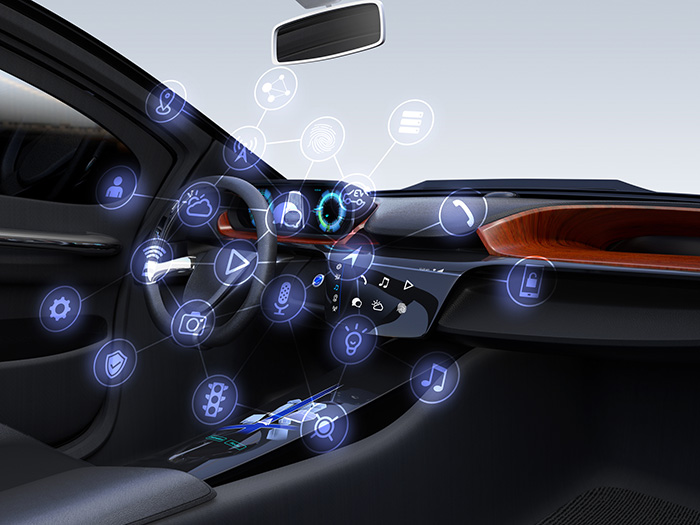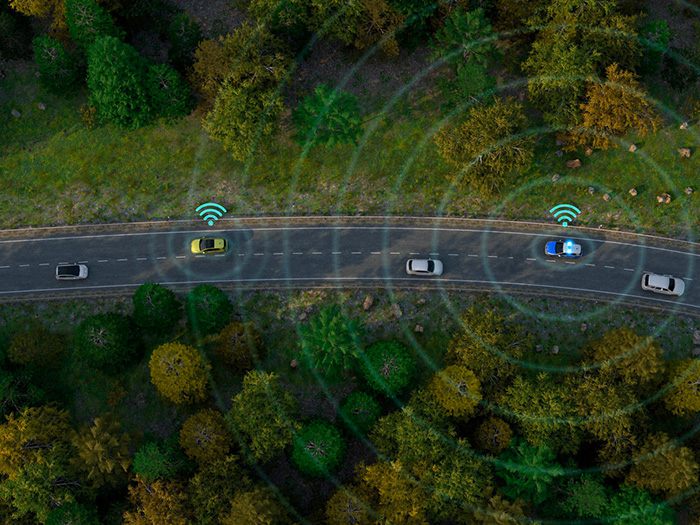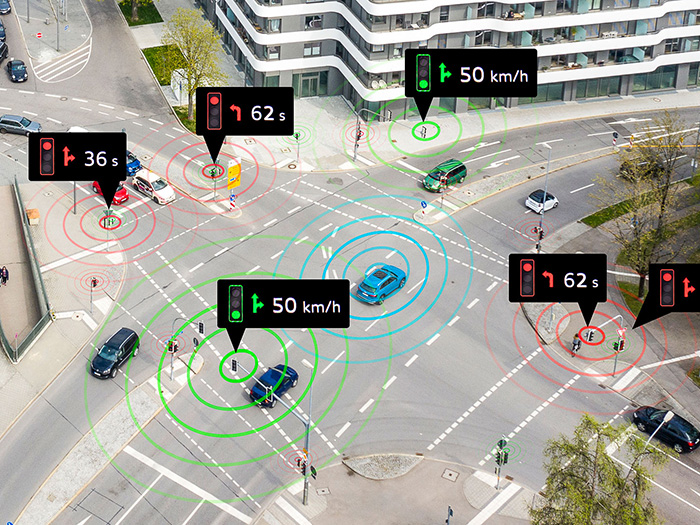Connected cars and Smart Roads: that's what future mobility looks like
The Connected Cars & Mobility Observatory of the School of Management at Polytechnic University of Milan (Politecnico di Milano) has analysed the current state of mobility and the trends regarding “smart” cars, outlining the possible scenarios over the short and long term.
The automotive sector has always played a key role throughout the world – both economically and in terms of its social impact – and it is undergoing a deep and rapid transformation, with digitalisation as one of the main topics. On-board connected services will bring new opportunities and experiences to drivers and passengers, driving assistance systems will continue to improve safety, and at the same time new possibilities for the shared use of vehicles will be created. In addition to these substantial changes, we are also seeing the transition towards electric mobility, which is advancing apace and opening up new scenarios.
The need to learn more about these themes and report on them led to the establishment of the Connected Cars & Mobility Observatory, supported by the School of Management at Polytechnic University of Milan (Politecnico di Milano). Its aim is to analyse the phenomena around smart cars during their development phase and gain an insight into reactions from consumers and the market. The results of the research have been summarised in the “Connected Cars & Mobility: a new beginning” report.
Connected cars

In 2019 the Italian market for connected cars grew by 14%, reaching a total value of 1.2 billion euros: by the end of the year there were 16.7 million connected vehicles, equivalent to 42% of the total in circulation. 63% of these (10.5 million) had a so-called “black box” (a GPS/GPRS box) installed on board that tracks the vehicle and records driving information for insurance purposes. However, cars that are already connected, either through an integrated on-board SIM or through Bluetooth systems saw an even greater increase (up +47% to 2.2 million units and +33% to 4 million units, respectively).
Over the next few years the market for connected cars is set to grow, both in Italy and internationally. This is partly due to eCall – or automatic emergency calling – which has been compulsory from March 2018, and to the European regulation soon to come into force (scheduled for July 2022) that makes the installation of driving assistance systems in new cars mandatory, including automatic emergency breaking and lane-assist devices.
The importance of data
One of the features of connected cars is the large quantity of data they generate, which can be used to create value as much for private users as for companies. Services such as predictive maintenance based on monitoring the component wear, the ability to order food or book a table at the restaurant directly from your car, or changing the interior temperature remotely before you get in are just some of the opportunities that connected cars can offer.
Technologies end up influencing business models too, which are shifting towards sharing or pay-per-use services – by varying, for example, monthly hire charges so that they reflect the actual use of the vehicle.
At the same time, the growing importance of the electronics installed on board – both in terms of quality and quantity – is increasingly leading car manufacturers, Volkswagen Group included, to establish strategic partnerships and acquire innovative start-ups, boosting their presence in Silicon Valley and opening digital-focused research centres that attract the best talent specialised in the new technologies.
Safety

Driver assistance systems (ADAS) are among the most popular and appreciated technologies among users, and their integration into new models will have a positive effect – in terms of the number and the severity of road accidents – which will become evident over the next few years.
It is estimated that the widespread use of a broad range of safety systems, such as automatic emergency breaking and lane assist (mentioned above), as well as other devices that allow speed management, the monitoring of the proximity of other vehicles and blind spots, could lead to a 28-31% reduction in accidents and injuries on an annual basis, with an overall economic saving of 3.3 billion euros per year.
The long-term future
Currently personal mobility is defined by four fundamental aspects: vehicles capable of transporting 4-5 people, powered by fossil fuels, owned by individuals, and physically driven by people. In the next 20 or 30 years the scenario outlined by the team at Polytechnic University of Milan will be very different: vehicles will be smaller and powered by electricity, ownership will be shared and they will be self driving.
The last of these four characteristics will be the most disruptive, bringing with it the widespread use of robotaxis (self-driving taxis). It won’t take many of them to meet users’ actual requirements, given that the contemporary use of private cars does not generally exceed 10%, but they will need to be designed to travel longer total distances and integrate highly advanced technologies.
In order to move from level 3 of autonomous driving, already available on some Volkswagen Group models, to levels 4 and 5, cars will have to be able to interact on a huge scale with the surrounding infrastructure. Otherwise vehicles will be forced to rely exclusively on their on-board sensors, so-called “ego sensors”, for navigation.
V2X interconnection

For this reason, the V2X connections through which vehicles will be able to share data generated by on-board sensors will be crucial, boosting the possibilities of perception beyond the vehicle’s own field of vision. The continuous exchange of data between control systems will allow for automatic coordination and synchronisation, even in complex scenarios with high traffic densities. This will make mobility increasingly safe, sustainable and efficient.
V2X connections require the support of a communication network to connect vehicles to each other, to infrastructure, and to other road users. The technologies currently available use the ETSI ITS-G5 standard (based on WiFi) and the cellular C-V2X technology (currently based on 4G networks but being developed for 5G). At present, however, performance levels are not sufficient to enable services such as cooperative coordinated driving, remote driving, and the extension of sensors. For that reason, we will have to wait for a further advance in the technology.
Smart Mobility and Smart Roads in Italy

Issues around connectivity on the road and smart mobility are increasingly gaining ground in Italy and there are many examples of institutions and projects moving in this direction. By 2030, for example, ANAS (the company deputed to the construction and maintenance of Italian motorways) aims to transform 3,000 kilometres of the Country’s roads into Smart Roads, allowing vehicles to communicate with each other and with the infrastructure.
By the end of 2019, 36% of Italian municipalities with more than 25,000 inhabitants had launched at least one Smart Mobility project in the previous three years, while a further 39% had already done so prior to 2017. Meanwhile, only 9% of municipalities with more than 80,000 inhabitants had still not set up any Smart Mobility projects. 58% of the initiatives have passed the trial phase prior to being rolled out to the entire urban area. In many cases the projects feature high levels of innovation, thanks to a combination of the Internet of Things and Artificial Intelligence.
The main objectives of the projects are: environmental sustainability (28%); the improvement of existing services (24%); road safety (14%); new services for citizens (12%); and pure innovation (5%). At present, the most widespread applications in the municipalities concern: electric mobility (21%), sharing services (18%); parking management (16%); and traffic management (14%).
Source: Osservatori Digital Innovation
